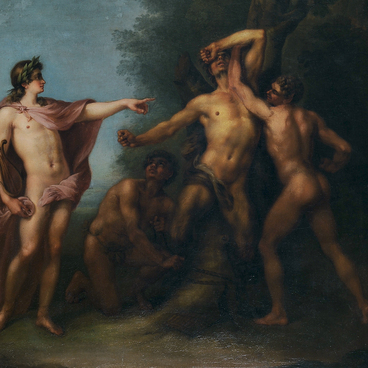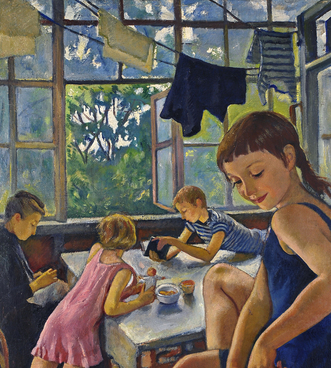Artworks by Jacques Stella are exhibited in almost all French museums and are present in many of the world’s largest collections. The painter lived in Italy for a long time where he did commissions for kings, princes and cardinals. JAcques StElla painted one of the most remarkable paintings of the NovosibIrsk State Art Museum collection, “The Adoration of the Golden Calf.”
It is based on a biblical story and depicts an episode of the Exodus of the Hebrews from Egypt. During their journey to the Promised Land, the Israelites stopped to rest at the foot of Mount SinAi. Prophet Moses spent forty days and forty nights at its summit, where he received the Ten Commandments in his conversation with God. However, his people committed a sin while he was absent.
They thought that apparently Moses had left them and would not come back. They asked his brother Aaron to make them a god who would lead them further. Aaron ordered the people to collect all the gold jewelry and used it to create a statue of a calf, which became a new idol for the Israelites. The people offered sacrifices to the golden calf and celebrated festivals, having forgotten their true God. When Moses so it he destroyed the idol. Thus, the image of a golden calf was created, embodying the momentary wealth for which people are ready to give up true values.
Stella’s painting is marked by deep cool tones and a thought-out composition — nothing about the painting is excessive, every detail is in its place. The artwork makes a cheerful, festive impression. The clothes of the characters are painted in bright colors. Stella skillfully used the color emphasis that makes the figures stand out against the majestic scenery.
The artist adhered to the classical style. The artwork is marked by sublime heroic pathos, the accuracy of drawing, and carefully adjusted and selected details. He sought to emphasize the ethical message of the artwork. At the same time, Stella’s works are painted in the spirit of Nicolas Poussin, one of the most prominent French painters. Poussin also created a painting about the story of the golden calf, so it is likely that Stella could have been guided by the work of his more famous fellow countryman.
It is based on a biblical story and depicts an episode of the Exodus of the Hebrews from Egypt. During their journey to the Promised Land, the Israelites stopped to rest at the foot of Mount SinAi. Prophet Moses spent forty days and forty nights at its summit, where he received the Ten Commandments in his conversation with God. However, his people committed a sin while he was absent.
They thought that apparently Moses had left them and would not come back. They asked his brother Aaron to make them a god who would lead them further. Aaron ordered the people to collect all the gold jewelry and used it to create a statue of a calf, which became a new idol for the Israelites. The people offered sacrifices to the golden calf and celebrated festivals, having forgotten their true God. When Moses so it he destroyed the idol. Thus, the image of a golden calf was created, embodying the momentary wealth for which people are ready to give up true values.
Stella’s painting is marked by deep cool tones and a thought-out composition — nothing about the painting is excessive, every detail is in its place. The artwork makes a cheerful, festive impression. The clothes of the characters are painted in bright colors. Stella skillfully used the color emphasis that makes the figures stand out against the majestic scenery.
The artist adhered to the classical style. The artwork is marked by sublime heroic pathos, the accuracy of drawing, and carefully adjusted and selected details. He sought to emphasize the ethical message of the artwork. At the same time, Stella’s works are painted in the spirit of Nicolas Poussin, one of the most prominent French painters. Poussin also created a painting about the story of the golden calf, so it is likely that Stella could have been guided by the work of his more famous fellow countryman.

